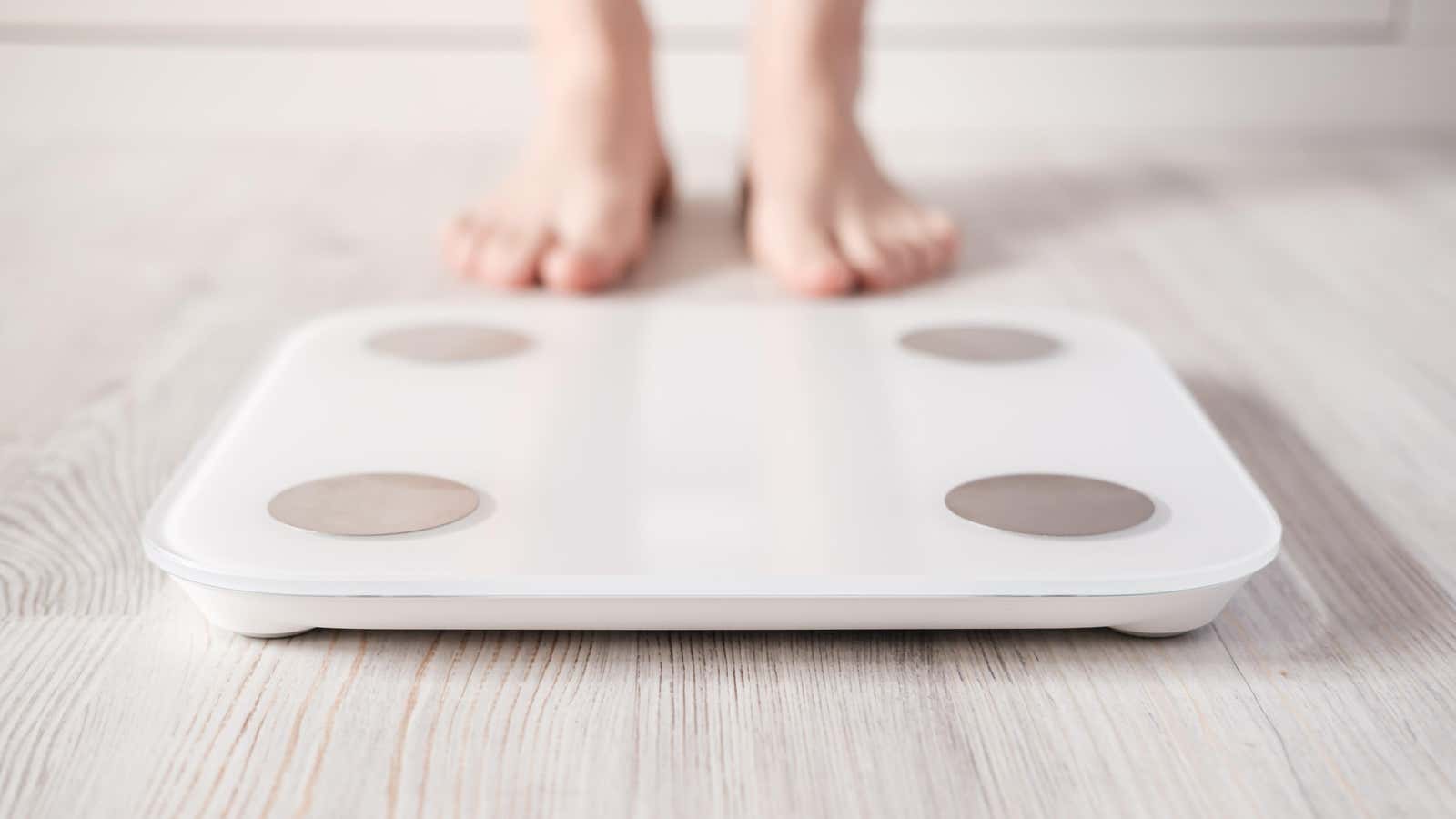Your Smart Scale Is Probably Not Accurate Enough to Be Useful.

Your weight on the scale changes for many reasons . We can gain or lose muscle, and we can gain or lose fat. We may be lighter when we are dehydrated, or heavier because we ate a lot of salt last night and we have water left over. Wouldn’t it be great to see the difference between all of these things? This is what many smart scales promise.
How the scale measures your body composition
Weight is simple enough: you step on a scale and it measures the force with which gravity acts on your body.
Fat, muscle mass, bone mass, body water and other indicators (which we can summarize as “body composition”) are taken from what is called bioimpedance analysis or BIA.
The electrically conductive foot pads on the scale (which can be almost imperceptibly placed on the material of the scale) allow current to flow through your body from one foot to the other. You will not feel this current and it is not dangerous, although if you have a pacemaker, you may be told that it is better to disable this feature.
The scale can measure the electrical resistance between one leg and the other, which means that current travels up one leg, through your torso, and down the other leg. Basically, the formula presents your legs and thighs as a kind of horseshoe made of a mixture of water and not water. It uses your height (which you enter in the app when setting up your profile) to guess the length of this horseshoe shape. And based on the measured resistance, it makes an assumption about which part of your body is fat versus watery tissue.
As you might expect, this approach has many limitations. The biggest is simply the number of assumptions the formula has to make about your body to go from “this is a 5’6” person with X resistance between the legs ”to“ your body is 32% fat ”, much less bone or dry muscle tissue.
For example, it makes assumptions about how much fat, muscle, etc. you have. It is in the upper body versus the lower body. It can also be caused by how hydrated you are, how long have you been exercising, and whether you have artificial knees or hips.
The BIA accuracy review article points out that because so many assumptions are required, even the best devices and algorithms are likely to never be able to provide completely accurate and detailed body composition information for humans:
The fundamental problem is that the BIA is a forecasting method that inherently requires simplifications and assumptions based on population averages, but is considered to be exactly applicable to all subjects.
A 2016 Consumer Reports study found that the scales they tested differed from the BodPod’s body fat measurements by anywhere from 21% to 34%. It’s not accurate enough to know exactly what your body fat percentage is. If you really want a number, any number, a simple calculation such as an estimate of the BMF body fat is likely to be just as good.
Some people say they enjoy watching their body fat (or muscle mass) change over time, and that this happens in the expected direction. Your experience may be different from this. My Withings smart scale has never shown any meaningful change to those numbers for me, even when I know my body composition has changed. (And yes, I’ve tried using the athlete mode. Even though I have more muscle than the average person my height, the athlete mode makes the numbers even less realistic for me.)
What about all the other numbers?
Smart scales are sold mainly due to the number of functions they have. A scale showing 12 things looks better than a scale showing only one or two indicators, right?
If you enter your height on the app and assume that the scale is accurate enough to determine your weight, your BMI measurements should be correct as BMI is simply the ratio between your height and weight.
Some scales claim to measure your BMR (basal metabolic rate), but it is usually calculated based on your weight, height, and age. You can get this from an online calculator .
Measurements of muscle mass, fat, bone and body water are usually just adjustments to the body fat formula calculated by the BIA; for example, lean body mass is your total weight minus fat. All of these measures have the same accuracy issues that we discussed above about the BIA. I wouldn’t really appreciate any of them.
Some scales measure your heart rate, which you can check yourself; just count the beats of your heart rate by watching the watch and see if it matches the number on your scale.
Take a close look at the other numbers that your weights claim to report, and you will likely see that they are calculated based on the data you enter into your profile in the app, often in combination with your weight or other weight data.
Are these scales accurate enough to be useful? In my opinion, no. If you find that the readings are consistent enough to be tracked over time, go ahead and have fun with them. But I wouldn’t use numbers on smart weights (other than weight) to make any decisions about what to eat or how to exercise.